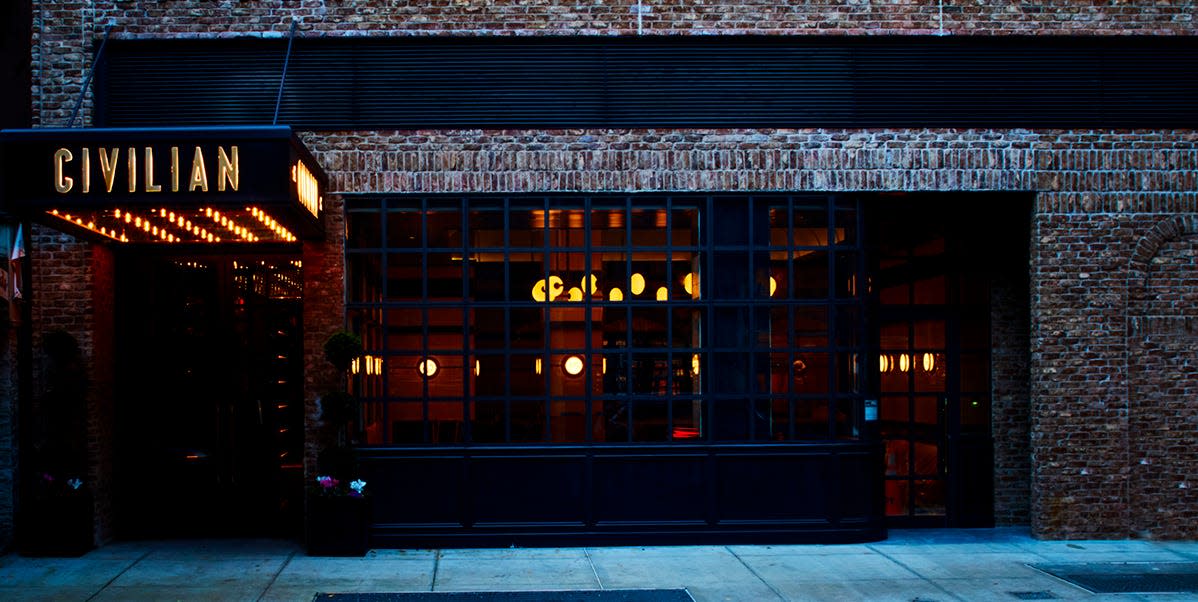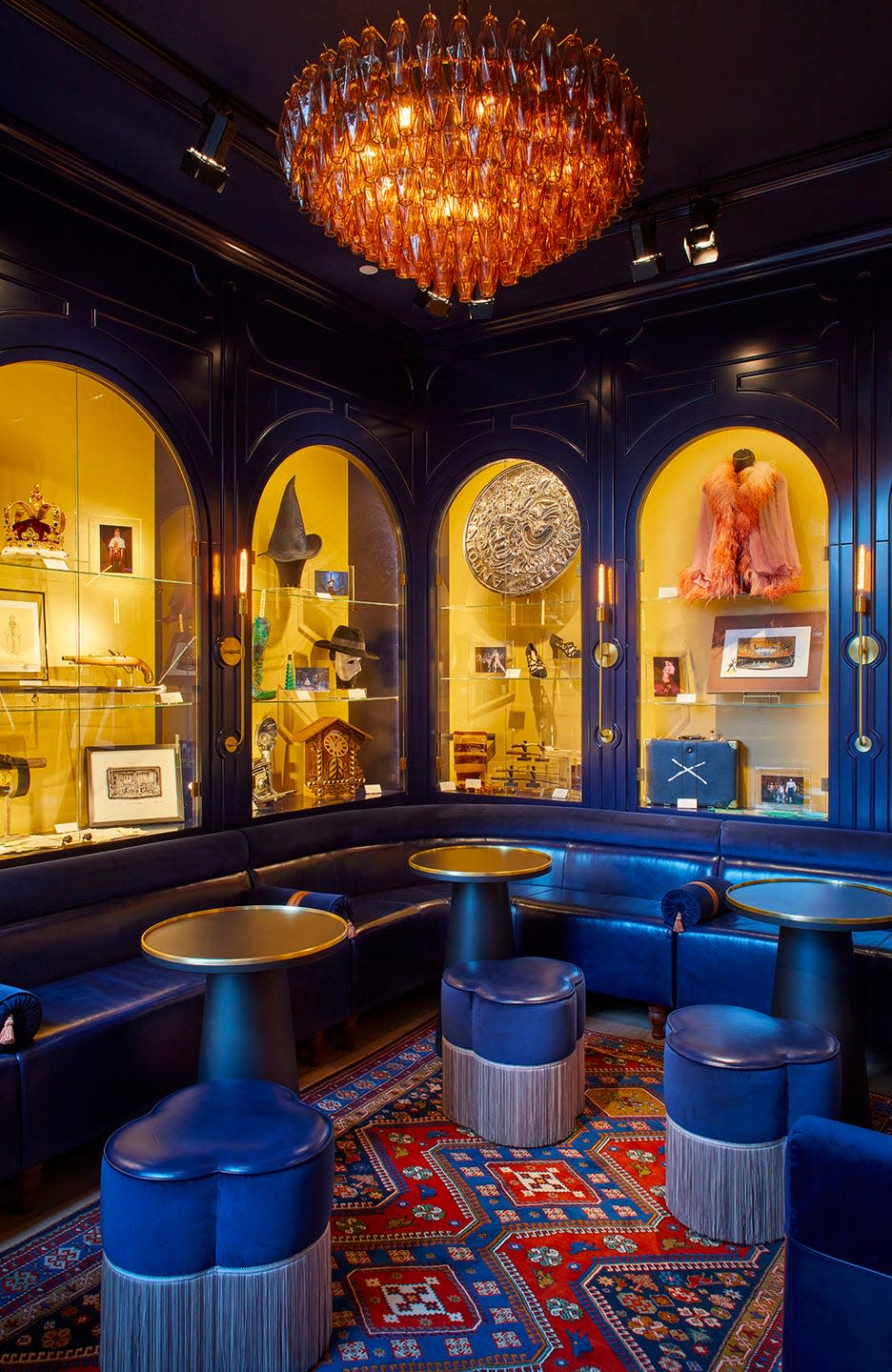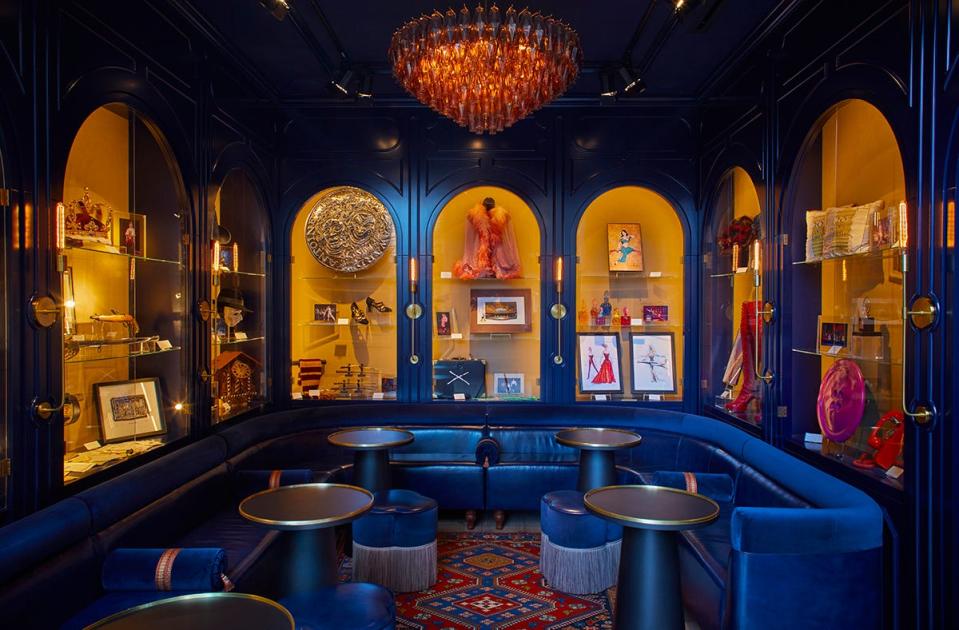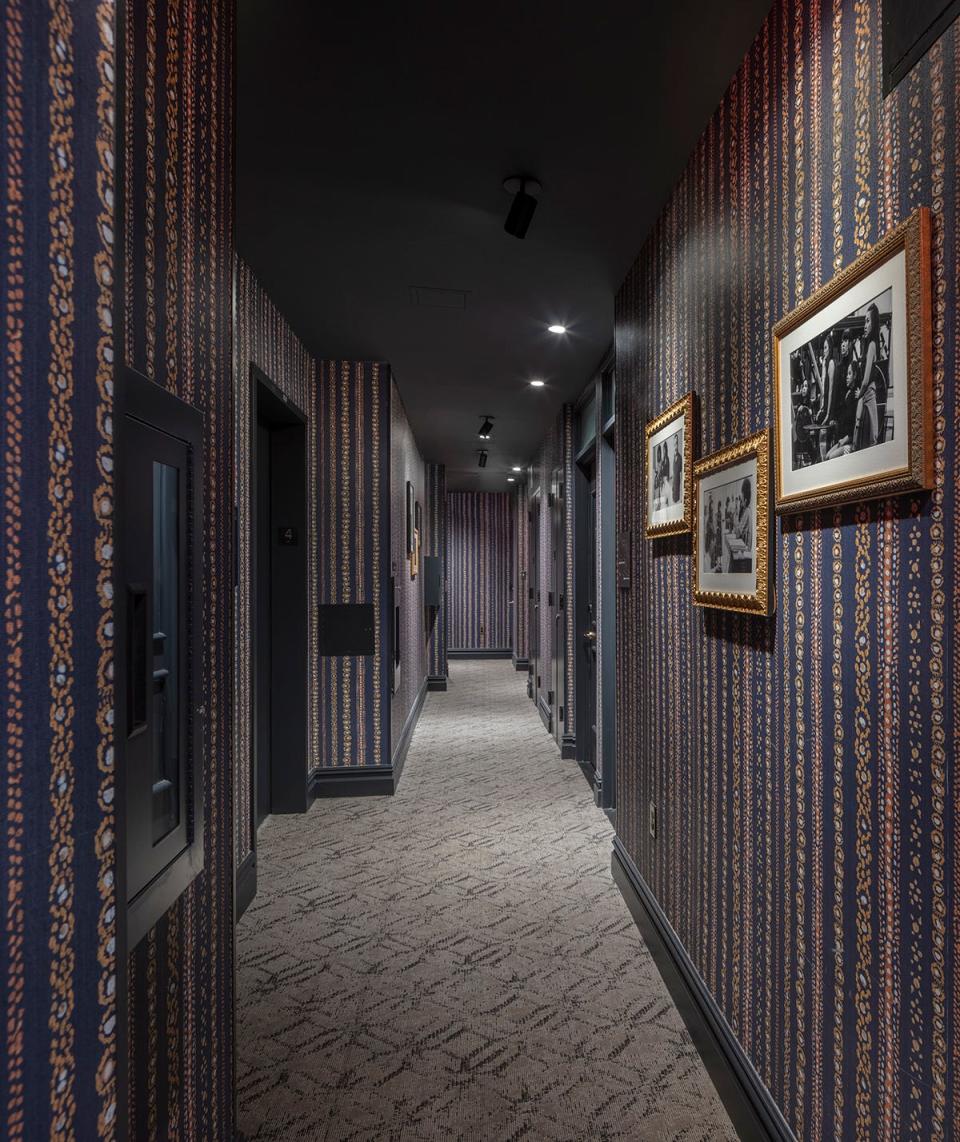An Exclusive Look Inside Broadway's Newest Hot Spot

- Oops!Something went wrong.Please try again later.
- Oops!Something went wrong.Please try again later.
David Rockwell has designed hotels, restaurants, museums, theaters, and some of Broadway’s most memorable shows. What’s the one thing they all have in common? “I couldn’t conceive of creating a project,” the Tony-winning architect and designer says, “that wasn’t based on narrative.”
His latest is no different. The CIVILIAN Hotel, now open on West 48th Street in Manhattan, takes its inspiration from the Theater District neighborhood it’s part of. The hotel’s soon-to-open restaurant boasts sconces featuring sketches (drawn by some of Broadway’s most notable designers including Scott Pask, Clint Ramos, Es Devlin, Beowulf Boritt, and Derek McLane) of the 41 Broadway theaters; the elevators are wallpapered in drawings by Tony-winning costume designers Paul Tazewell and William Ivey Long as well as artist Ruben Toledo; the lobby’s decorated with images by the photo duo Little Fang; and the guest room floors all play host to images of life on-stage and backstage from some of the theater world’s most accomplished photographers. This isn’t a building that’s shy about its interests.

Of all the different spaces within the CIVILIAN that pay tribute to the neighborhood’s most important industry, however, there’s one that might be the most alluring. The Blue Room, hidden just off the second-floor bar, is an intimate space designed by Rockwell and Tazewell that features nine vitrines full of finely curated theatrical curios—current treasures include Robin Wagner’s 1978 show curtain model for On the Twentieth Century, the original polo shirt and cast from Dear Evan Hansen, a pair of red boots and costume sketches from Kinky Boots, perfume bottles from She Loves Me, shoes from Kiss of the Spider Woman, Elphaba’s hat from Wicked, dueling pistol’s from Hamilton’s Off-Broadway run, and more—that plan to rotate about once each year.

“In each room we wanted to tell an entirely different story,” Rockwell says. “The Blue Room is relatively small, and we had the opportunity to create vitrines around all sides. One of my favorite buildings in the world is Sir John Soane’s Museum in London, which is filled with artifacts and objects he collected, and I thought this could be that kind of inner sanctum.”
Tazewell, who was recently nominated for a Tony Award for his costume design on MJ, adds, “What’s lovely about the space is that it’s cozy but it’s also a very elegant room, with satin blue walls and seating arranged to cradle anyone in the space, that becomes a jewel box because you’re surrounded by these beautifully presented items. There’s a feeling of elegance that elevates the experience of stopping by for a cocktail or a meeting, and also lends a sense of the Broadway community. It’s a space unlike any other in New York. The Blue Room allows these very diverse designs to live on as tactile memories of those significant live performances on Broadway.”

The Blue Room has already struck a nerve. Visitors to the space so far include Pamela Anderson, LaChanze, Brian Stokes Mitchell, Julianne Hough, Betty Buckley, Lynn Nottage, and more, and Tazewell doesn’t seem surprised that it’s found a following among show folk. “That combination of the blue walls and the fine cabinetry, as well as the gold accents, make for a regal, Old World quality while still being inviting,” he says. “The pieces in the vitrines are also familiar, so it doesn’t feel too stodgy, and when you put it all together, it creates a comfortable space for people to congregate. And it’s different from the spaces around it; it has a hidden, secret quality and it’s dear in that it’s set aside from the rest of the action of the hotel.”
Rockwell notes that, just like shows on a stage, the room truly only comes to life when there are people there to witness it. “Theater isn’t alive without an audience, and that’s also true of architecture, particularly hotels,” he says. “It’s thrilling to see the Civilian start to become that.”
You Might Also Like

